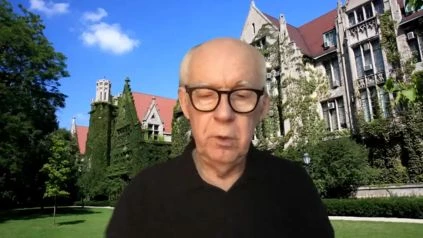Andrzej Jakubowiak, MD, Ph.D. of the University of Chicago Comprehensive Cancer Center speaks on the ASCO 2020 abstract Orvacabtagene autoleucel (orva-cel), a B-cell maturation antigen (BCMA)-directed CAR T cell therapy for patients (pts) with relapsed/refractory multiple myeloma (RRMM): update of the phase 1/2 EVOLVE study (NCT03430011)
Context:
Orva-cel is a BCMA-directed, investigational CAR T cell product with a completely human binder. In the EVOLVE phase 1 analysis, more than 100 pts were treated. There were previously registered pts treated at 50 and 150 x 106 CAR+ T cells (Mailankody ASH 2018 # 957). Results of higher dose levels (DLs) in 51 pts receiving orva-cel manufactured using a method intended to facilitate commercial use are now published.
Methodology:
After lymphodepletion with fludarabine/cyclophosphamide, Pts with RRMM who had 3 prior regimens, a proteasome inhibitor (PI), an immunomodulatory drug (IMiD), and an anti-CD38 monoclonal antibody (mAb), obtained orva-cel at 300, 450, and 600 x 106 CAR+ T cells.
Outcomes:
The median pt age was 61 (range, 33-77) y; the median diagnostic period was 7.0 (range, 1.7-23.6) y, with a median of 6 prior regimens (range, 3-18). Overall, 92% of the pts were penta-exposed (2 IMiDs, 2 PIs, and a mAb); bridging therapy was given to 61% of the pts (77% were refractory to bridging therapy). Grade 3 neurological event (NE) for > 7 d at 300 ⇠106 CAR+ T cells and grade 4 neutropenia for > 28 d at 450 x 106 CAR+ T cells. Two pts had dose-limiting toxicities. In the table, primary effectiveness and safety findings are shown. Tocilizumab and/or steroids (78 percent), anakinra (14 percent), and/or vasopressors (6 percent) were treated with Cytokine release syndrome (CRS)/NEs. In 21 percent, 55 percent, and 44 percent of pts, grade ⇠3 anemia, neutropenia, and thrombocytopenia occurred at 29 d (median time to resolution to grade ⇠2 of any cytopenia, 2.1 mo). 14 percent of grade 3 infections occurred. Median progression-free survival was not achieved after a median follow up (F/U) of 5.9 mo.
Findings:
Orva-cel showed manageable protection (CRS grade 3: 2 percent; NE grade 3: 4 percent) and convincing efficacy in heavily pretreated RRMM pts with a 91 percent objective response rate (ORR) and 39 percent complete response (CR)/stringent CR (sCR) rate at 300, 450, and 600 x 106 CAR+ T cells. Including minimal residual disease, durability of response and recommended phase 2 dosage, revised findings will be provided. Data on clinical trials: NCT03430011.

